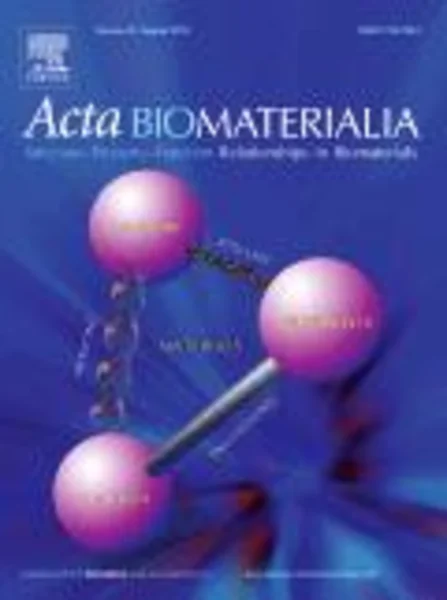-
supercritical co2 fluid-foaming of polymers to increase porosity: a method to improve the mechanical and biocompatibility characteristics for use as a potential alternative to allografts in impaction bone grafting?
جزئیات بیشتر مقاله- تاریخ ارائه: 1392/01/01
- تاریخ انتشار در تی پی بین: 1392/01/01
- تعداد بازدید: 757
- تعداد پرسش و پاسخ ها: 0
- شماره تماس دبیرخانه رویداد: -
disease transmission, availability and cost of allografts have resulted in significant efforts to find an alternative for use in impaction bone grafting (ibg). recent studies identified two polymers with both structural strength and biocompatibility characteristics as potential replacements. the aim of this study was to assess whether increasing the polymer porosity further enhanced the mechanical and cellular compatibility characteristics for use as an osteogenic biomaterial alternative to allografts in ibg. solid and porous poly(dl-lactide) (pdlla) and poly(dl-lactide-co-glycolide) (pdllga) scaffolds were produced via melt processing and supercritical co2 foaming, and the differences characterized using scanning electron microscopy (sem). mechanical testing included milling and impaction, with comparisons made using a shear testing rig as well as a novel agitation test for cohesion. cellular compatibility tests for cell number, viability, and osteogenic differentiation using wst-1 assays, fluorostaining, and alp assays were determined following 14 day culture with skeletal stem cells. sem showed excellent porosity throughout both of the supercritical-foam-produced polymer scaffolds, with pores between 50 and 200 μm. shear testing showed that the porous polymers exceeded the shear strength of allograft controls (p < 0.001). agitation testing showed greater cohesion between the particles of the porous polymers (p < 0.05). cellular studies showed increased cell number, viability, and osteogenic differentiation on the porous polymers compared to solid block polymers (p < 0.05). the use of supercritical co2 to generate porous polymeric biodegradable scaffolds significantly improves the cellular compatibility and cohesion observed compared to non-porous counterparts, without substantial loss of mechanical shear strength. these improved characteristics are critical for clinical translation as a potential osteogenic composite for use in ibg.
مقالات جدیدترین رویدادها
-
استفاده از تحلیل اهمیت-عملکرد در ارائه الگوی مدیریت خلاقیت سازمانی و ارائه راهکار جهت بهبود
-
بررسی تاثیر ارزش وجوه نقد مازاد بر ساختار سرمایه شرکت های پذیرفته شده در بورس اوراق بهادار تهران
-
بررسی تأثیر سطح افشای ریسک بر قرارداد بدهی شرکت های پذیرفته شده در بورس اوراق بهادار تهران
-
بررسی تأثیر رتبه بندی اعتباری مبتنی بر مدل امتیاز بازار نوظهور بر نقد شوندگی سهام با تأکید بر خصوصی سازی شرکت ها
-
تأثیر آمیخته بازاریابی پوشاک ایرانی بر تصویر ذهنی مشتری پوشاک ایرانی (هاکوپیان)
-
بررسی آزمایشگاهی اثر افزودنی نانوسیلیس بر رفتار بتن تازه
-
بررسی پاسخ یک قاب دو بعدی با جدا سازی پایه تحت اثر بار باد در شهر کرمانشاه
-
بررسی ویژگی های فردی مؤثر در سکوت سازمانی و تاثیرگذاری آن بر رفتار شهروندی سازمانی
-
بررسی غلظت فلوئور در منابع آب شرب خراسان جنوبی سال 87-1386
-
on the effect of different ratio of perforation’s diameters on crashworthiness of steel cans
مقالات جدیدترین ژورنال ها
-
مدیریت و بررسی افسردگی دانش آموزان دختر مقطع متوسطه دوم در دروان کرونا در شهرستان دزفول
-
مدیریت و بررسی خرد سیاسی در اندیشه ی فردوسی در ادب ایران
-
واکاوی و مدیریت توصیفی قلمدان(جاکلیدی)ضریح در موزه آستان قدس رضوی
-
بررسی تاثیر خلاقیت، دانش و انگیزه کارکنان بر پیشنهادات نوآورانه کارکنان ( مورد مطالعه: هتل های 3 و 4 ستاره استان کرمان)
-
بررسی تاثیر کیفیت سیستم های اطلاعاتی بر تصمیم گیری موفق در شرکتهای تولیدی استان اصفهان (مورد مطالعه: مدیران شرکتهای تولیدی استان اصفهان)
-
تحلیل انتقادی محتوای کتب درسی مدارس از منظر توجه به مفاهیم تربیت شهروندی
-
ارائه یک روش جدید بازسازی متون در تصاویر نویزی مبتنی بر الگوریتم های -p نرم و بردار گرادیان
-
شرح و نقد رای وحدت رویه 652 دیوان عالی کشور مصوب 1380/1/28 با موضوع لغو معافیت دولت از پرداخت هزینه دادرسی
-
بررسی کیفری و جزایی توصیف جرم
-
نقش بهزیستی معنوی و روانی در پیش بینی رفتارهای پرخطر جوانان زندانی شهر زنجان




سوال خود را در مورد این مقاله مطرح نمایید :